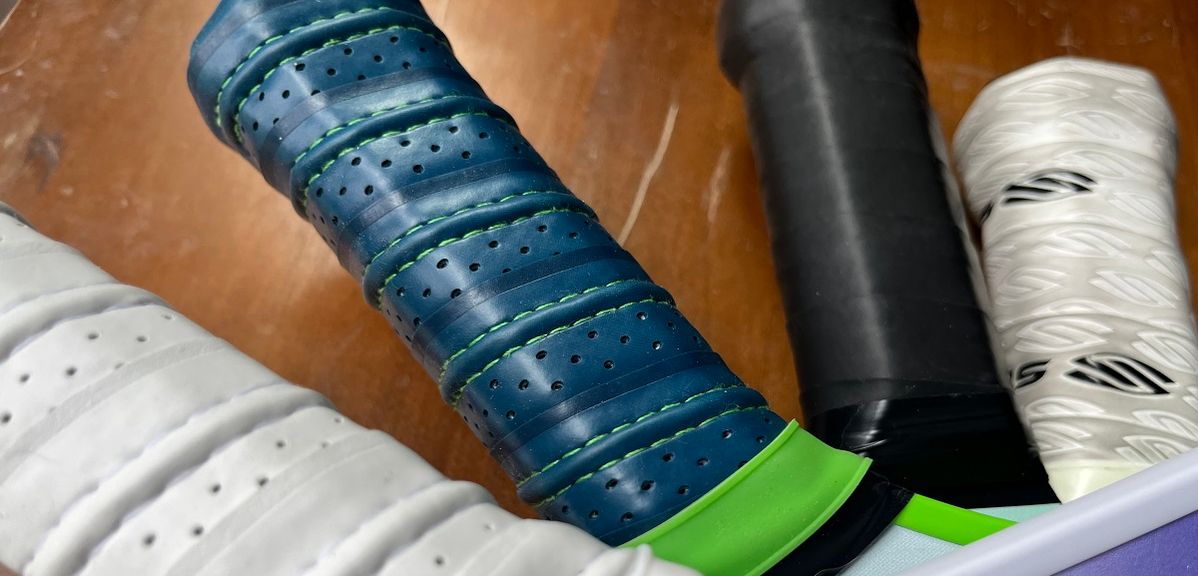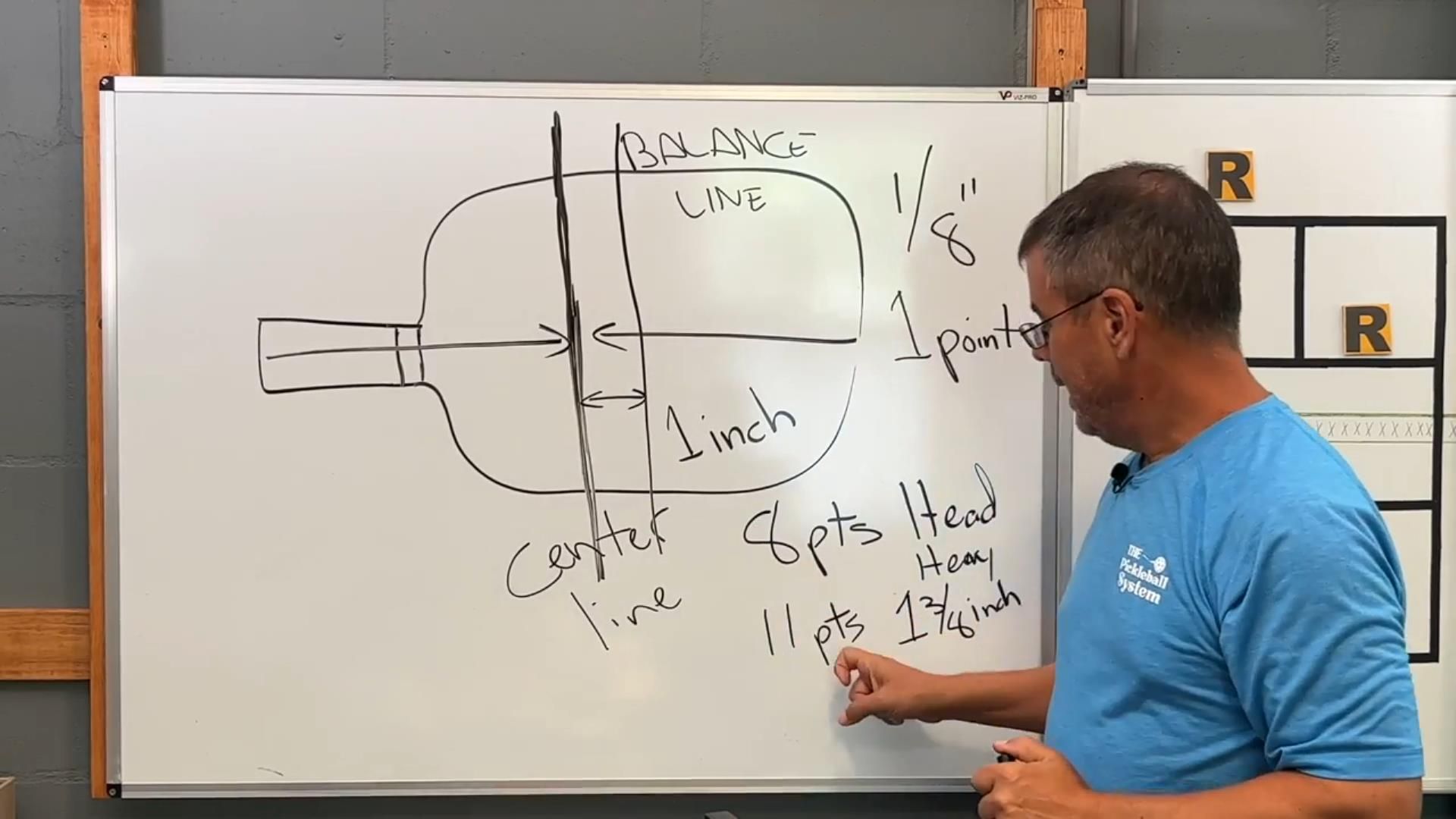
Pickleball paddles are, obviously, critical to us pickleball players. No paddle, no play. This open letter is to request two things from you, the pickleball paddle manufacturers:
- Keep in mind the reality for the majority of us players who enjoy this sport (more on this below).
- Adopt a convention to be used by all paddle manufacturers to provide swingweight information about your paddles.
Paddle swingweight
One of the most important specifications for any pickleball paddle is the paddle’s weight. Eight ounces has become the universal standard paddle weight these days.
This weight is its static weight: when the paddle is placed on a scale.
The reality, however, is that we do not use the paddle statically. The interaction between us and our paddles is with the paddle in motion. We hold our paddles aloft and swing them around for 2, 3, or even 4 hours at a time.
That prolonged holding and swinging of the paddle stresses our small arm muscles, tendons and joints. Too much stress on these areas and we end up with arm pain, potentially sidelining us.
So what matters more than the paddle’s static weight is the paddle’s “swingweight.”
As we swing the paddle, say to hit a serve, the paddle “pushes” back into our arm, applying what is, in essence, weight to our arm.
An easy way to feel a paddle’s swingweight is to grab your paddle in your dominant hand and swing it from side to side. You can then pick up a different paddle and do the same thing. It is likely that you will feel a difference between the two paddles.
The one that offers more resistance (like if you are dragging the paddle through water) has the higher swingweight.

Both of the above paddles have the same 8 ounces in total (static) weight. The difference is in how the weight is distributed in each paddle.
It is helpful to think of weight distribution from the center of the paddle out toward the paddle’s top and bottom.
The paddle on the left has 5 ounces toward the top and 3 ounces toward the bottom. This paddle would be a “head heavy” paddle and would have a higher swingweight than the paddle on the right, which only has 3 ounces are toward the top.
The paddle on the right is a “head light” paddle. The terms “head heavy” and “head light” are commonly used in tennis and can easily be adopted by pickleball (more on this below).
Effects of paddle swingweight on play
Paddle swingweight impacts paddle performance in a couple key ways:
- The heavier a paddle swings, the more power it will deliver to the ball. Think of sledgehammer vs regular house hammer. Heavier hammer = more power behind each swing.
- A heavier swingweight paddle will be slower than its lighter swingweight counterpart. Again, sledgehammer versus house hammer. Much harder (and longer time) to get a sledgehammer from one side to the other. Same with a heavier swingweight paddle.
One example where a player may want to use a paddle with higher swingweight is in singles pickleball.
Singles pickleball involves many more groundstroke rallies, a powerful serve is more important, and there are not as many NVZ hands battles (where paddle speed is important).
A heavier swingweight paddle would also be helpful if you are having to play into strong wind conditions and cannot get your balls to go deep.
Related: Dwell Time - Pickleball's New Hot Debate Topic
But the heavier swingweight paddle also has some drawbacks, one of which potentially disqualifies the paddle for use by many players.
One of the drawbacks of the heavier swingweight paddle is that it will take longer for you to get the paddle into position.
Say your paddle is set up for a backhand volley but the ball gets hit hard toward your forehand side. It will be harder for you to get your paddle into position if it is heavier as compared to a paddle with a lighter swingweight.

Effects of paddle swingweight on your body
We wield our paddles with our hand. Using our shoulders, we bring our arm forward, swinging the paddle towards the ball with the aim of making contact with it and sending it towards our intended target.
At first glance, seems like a simple thing: arm moves forward, paddle moves with arm, ball is hit.
But reflect on this for a moment, and you will understand that there is more to it. There are several moving parts in the chain from hand to shoulder.
In addition to the complexity of the hand, our wrists, elbows, and shoulders, each provide mobility and, hence, have lots of range. And the muscles, tendons, and joints in our hands, wrist, forearm and elbow are some of the smallest on our bodies.
As we swing our paddle through the air, we stress each of these muscles, tendons, and joints. The higher the paddle’s swingweight, the higher the stress.
Here are two realities about paddle swingweight and our bodies:
- A heavier swingweight paddle applies greater stress to the muscles, tendons, and joints in our arm than a paddle with a lighter swingweight.
- A player with smaller arms needs to pay particularly attention to the swingweight of the paddle they play with. A paddle that a male pro athlete swings easily will not be as easy for the smaller player to wield out on the pickleball court.
Request No. 1 – Paddles for the real world
It's great that paddle manufacturers are innovating and putting out paddles to be used by pro players. Recently, however, it seems that many manufacturers are overfocusing on paddles specifically designed for pro-level play.
This is the first request in this letter: do not forget pickleball’s majority of players.
As you design new paddles, keep in mind that most players are not dipping their paddle heads to whip that extra power and spin into the ball. And that most players do not need a sledgehammer paddle to enjoy the game.
To the contrary, most players would benefit from more paddles with lighter swingweight.
Paddles that they can quickly move into position and that will not cause potential elbow, wrist, or other arm pain.
Note – the request is not for lighter paddles. It is for lighter swingweight paddles.
The paddles can be 8 ounces – the weight just needs to be distributed slightly more in favor of the grip than the head.
In fact, I would venture that paddles could even be a heavier than 8 ounces as long as they maintained a lighter swingweight than many of the current 8-ounce paddles.

Request No. 2 – Share swingweight (or at least head balance)
Paddle manufacturers should adopt a convention that they all use to provide the swingweight of a paddle.
Based on my review of articles discussing the science of swingweight, it appears that coming up with an actual swingweight figure may not be a realistic one.
I would submit, however, that if my understanding of the science on swingweight is incorrect and such a figure could be reasonably provided by the paddle manufacturers, then paddle swingweight for each paddle should be provided.
If you are reading this open letter and have more in depth understanding of how to arrive at a swingweight, please join the conversation.
Having a tennis background, I do know that there is, in fact, a convention already widely used and accepted to provide at least some swingweight guidance. The convention consists of using head heavy/head light points to identify the paddle’s balance.
As the paddle’s weight distribution moves up or down, the paddle becomes head heavy or head light and points are assigned based on how head heavy or head light.
Tennis racket specifications have included the racket’s head weight designation for years. And the process for determining the points to assign to a racket – or paddle – are simple and can be done by anyone.
There is no reason why paddle manufacturers cannot, at a minimum, provide this same information. The information can then be used by players to have an idea of the swingweight of a paddle.
Currently, there is no way for a player to even approximate a paddle’s swingweight without actually holding and swinging the paddle.
Given the information, we have been able to determine to date about a paddle’s head balance, we would suggest using the number 8 as the standard for an evenly balanced paddle. By this convention, 1 inch above the paddle’s centerline nearer the top of the paddle would be the zero balance line.
For every 1/8 inch deviation from the zero balance line, the paddle would be assigned 1 point of head heaviness. The more points, the head heavier the paddle and, all other things being equal, the greater the paddle’s swingweight.
To “sweeten the pot” for paddle manufacturers, I will suggest here that the first manufacturer(s) to adopt a swingweight convention will:
(a) be the leader(s) in this area
(b) will gain an advantage by providing players with valuable information that they can use to be smarter consumers
I would also suggest that these manufacturers can help themselves as well as the playing public by including educational resources about swingweight on their sites, allowing players to learn more about this important consideration.
Read Next: Where Should You Add Lead Tape to Your Pickleball Paddle? | The Paddle Taping Guide
If you are reading this open letter and feel strongly about it, let the manufacturer of the paddle you use know that you would appreciate knowing the swingweight (or at least the head balance) of the next paddle you purchase. No more purchasing paddles in the dark.
Many thanks to Better Pickleball (CJ Johnson & Tony Roig) for providing us with this letter.
If you want to keep up with everything pickleball, you’ve got to sign up for our newsletter. We break news faster than anyone in the game. Subscribe below:









